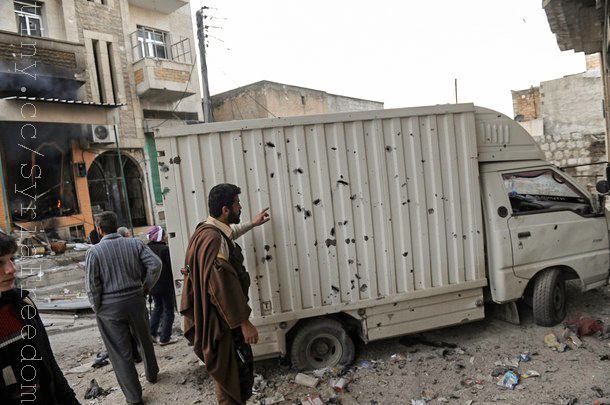
Documenting “all sides”
The internal politics of Syria’s conflict have never been simple, but they just got even more complicated. Earlier this week, Free Syrian Army Supreme council Member Kamal Hamami was reportedly killed by members of the Al-Qaeda affiliated Islamist group, the Islamic State of Iraq and the Levant. In response, FSA members called the killing a “declaration of war.” Now, with the overly-simple “rebels versus government” binary showing its cracks, documentation efforts must also recognize the need to base their work upon evidence, not along political lines.
A range of obstacles and dynamic alliances mean that very different documentation environments exist across Syria. Much of the documentation that reaches western media (only some of it all) comes from rebel-controlled, “liberated,” areas and targets violations by government forces. These documenters also tend to be activists and protesters, with understandably strong political stances against the regime. Unfortunately, documentation in these areas is sometimes subject to pressures from the armed groups. For instance, militias might try to influence or manipulate films, photos, or reports from documenters in their area, or selectively control their dissemination. For all these reasons, such documentation is unlikely to capture violations from the rebel groups, and documenters doing so might face punishment.
Documentation coming out of government-controlled areas is much rarer. Though the Syrian government itself has made statements on documentation, they have frequently proved unreliable. In an attempt to gather documentation from all sides, the SJAC has reached out to governmental documentation groups, but has not received a response. To make matters more difficult, carrying out documentation efforts in government-controlled areas is typically much more dangerous than in rebel-controlled areas. Despite the difficulty, documenters, including the SJAC’s partners, have carried out such work as obtaining documents from security offices that might later serve as evidence. Documenters caught by government forces might face detention or death for their actions.
In general, Islamist extremist groups aren’t as interested in accountability insofar as it relates to documenting violations. In fact, such groups have not only summarily executed detainees, which is prohibited by international law, but have filmed and disseminated such videos themselves. Extremist groups have rhetorically equated accountability to the carrying out of Sharia, with the form of its actual implementation varying by group and location. As Islamists’ military strength is increasingly recognized as formidable, their lack of support for documentation is no help to transitional justice efforts.
Mixing politics with documentation is all too easy, and in many contexts it seems impossible to untangle the two. But when the evidence represents violations from “all sides” (that is, not leaving out whole groups or suffering from major biases or gaps), the entire documentation process enjoys greater legitimacy. So while documentation should be apolitical, those interested in documentation should not ignore the very different documenting environments. Steps to increase documentation in government-controlled areas and on rebel groups would help.
Perhaps equally important is that politicized documentation allows partisan views to obscure very real wrongs committed against individuals. Rather than representing the crime of one “side” against “the other side,” documentation is also a critical way to establish, through evidence, injustices and the human suffering they cause.
Signup to receive the SJAC’s Weekly Updates here.
Follow us on Twitter at SJAC_info.